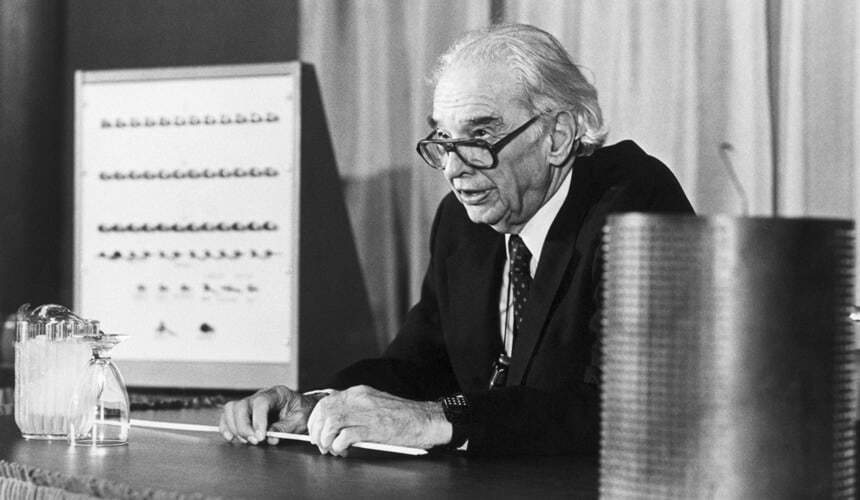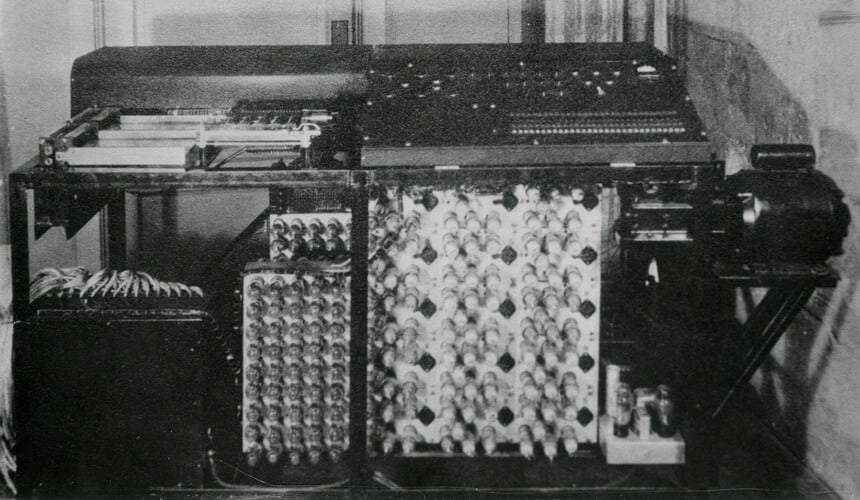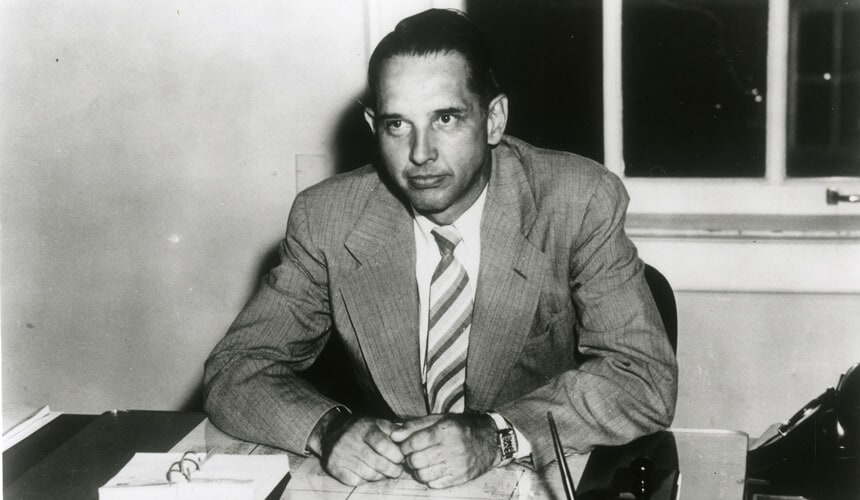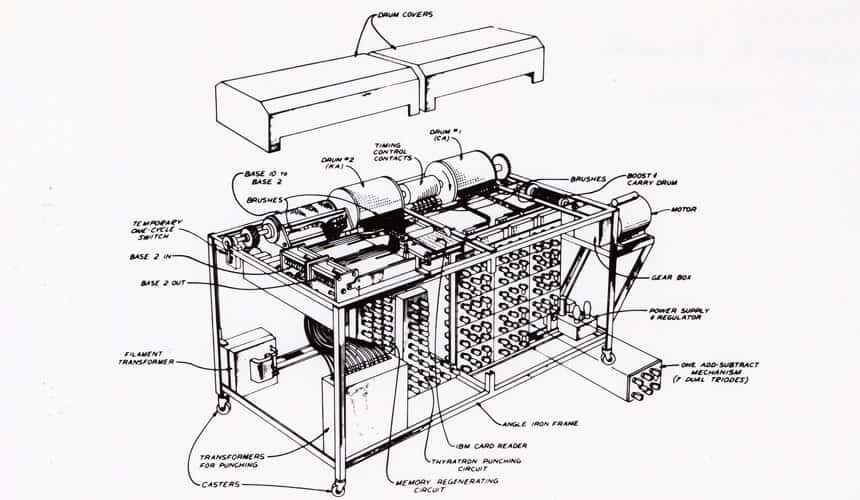John Atanasoff
Creativity unlocked in a wild winter ride
Faced with performing a ton of time-consuming equations for his doctoral thesis at UW-Madison in 1930, John Atanasoff used a clunky analog computing machine, but he felt there had to be a better, faster way.
Atanasoff, a student of Professor John Van Vleck’s while at Madison, couldn’t shake the idea but couldn’t solve the computing condundrum until one winter night in 1937. A fan of fast cars, the Iowa State College professor got behind the wheel with no destination in mind.
Two hundred miles later, he sat in an Illinois roadhouse, drinking Scotch whiskey.
“It was at an evening of Scotch and 100-miles-per-hour car rides when the concept came for an electronically operated machine that would use base-two (binary) numbers, instead of the base-10 numbers, condensers for memory and a regenerative process to preclude loss of memory from electrical failue,” Atanasoff later recalled.
He grabbed a cocktail napkin and started scribbling notes. From that ride, the first digital electronic computer was born.
Atanasoff convinced Iowa State to give him $650 in 1939. He and electrical engineering student Clifford Berry built the Atanasoff-Berry Computer (ABC) in two years in the physics building’s basement, using punch cards to input formulas and rotating memory drums to store data.
The discovery didn’t attract much attention until the 1960s, when a patent lawsuit pitted the ABC and Honeywell against Sperry Rand’s patents on the ENIAC computer.
In 1973, a federal court ruled Atanasoff was the inventor of the first digital electronic computer.
In 1948, while working for the federal government, Atanasoff returned to Ames to find that the ABC had been dismantled and only a few parts remained. It was reconstructed between 1994-97 from available records.
Atanasoff, son of a Bulgarian immigrant father and a New York school teacher, was presented the National Medal of Technology by President George H.W. Bush in 1990. An asteroid and an Antarctic peak are named for him, as well as several Bulgarian schools, community centers, streets and a technology award.
Atanasoff died in 1995, but the legacy of his computer lives on in today’s digital age.
 64° F
64° F


